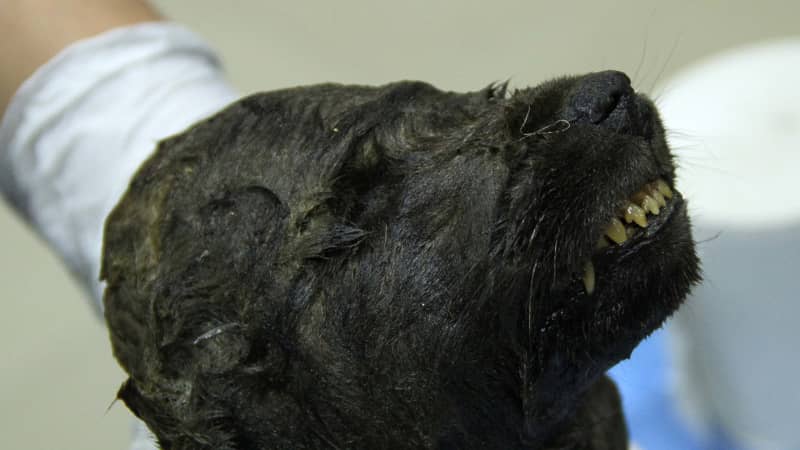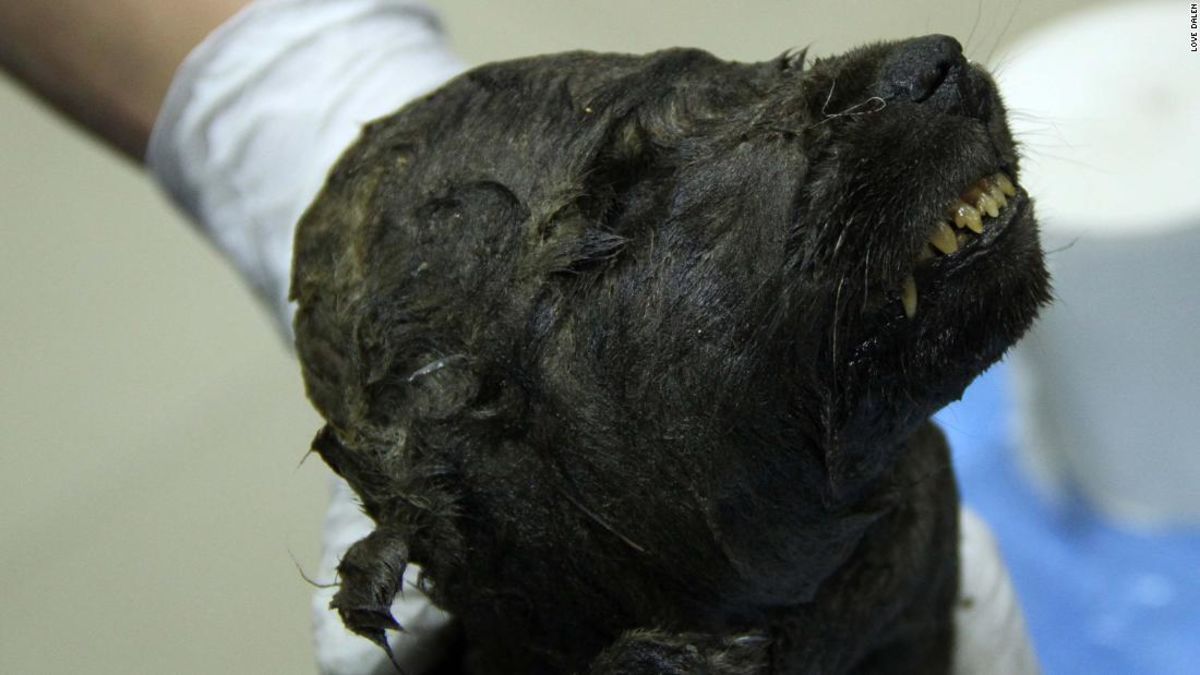Products You May Like

Scientists are running tests on the body of the canine, which is 18,000 years old.
Love Dalen
Using carbon dating on the creature’s rib bone, experts from Sweden’s Centre for Palaeogenetics were able to confirm that the specimen had been frozen for around 18,000 years, but extensive DNA tests have so far been unable to show whether the animal was a dog or a wolf.
“It’s normally relatively easy to tell the difference between the two,” David Stanton, a researcher at the Centre for Palaeogenetics, told CNN.
“We have a lot of data from it already, and with that amount of data, you’d expect to tell if it was one or the other. The fact that we can’t might suggest that it’s from a population that was ancestral to both — to dogs and wolves,” he explained.
Stanton told CNN that the period the puppy is from is “a very interesting time in terms of wolf and dog evolution.”
“We don’t know exactly when dogs were domesticated, but it may have been from about that time. We are interested in whether it is in fact a dog or a wolf, or perhaps it’s something halfway between the two,” he said.
Further tests might provide more insight into exactly when dogs were domesticated, Stanton said.
Scientists from the Center for Palaeogenetics said on Twitter that genome analysis had revealed that the puppy was male. They said that, after conferring with their Russian colleagues, they would call the puppy Dogor — meaning “friend” in Yakutian.
The scientists plan to run more genome data tests on the creature to find out more about its origins.

